
These urchins are very common and can be seen either exposed or under rocks. Large individuals may aggregate in lagoon algae patches. They vary in color from white to black, often with banded spines and usually with a distinct anal bulb on the top that looks like a spotted balloon. They have two kinds spines, a longer thicker, blunt variety that presents no danger and shorter, thin and very sharp and brittle spines that can easily penetrate flesh and break off in the wound. These are the urchins responsible for most human spine wounds at Kwajalein. The thin spines do possess venom and wounds can be quite painful. A serious spine injury can cause an infection or other serious symptoms, but most injuries are relatively minor. Many years ago, I was advised to treat spine injuries with a solution of vinegar and water, soaking for about 20 minutes three times a day, but I believe this is no longer recommended. Instead, one can remove spines with tweezers if possible and watch the injury, treating with antibiotics if an infection occurs. Personally, I generally do nothing and let the spines dissolve over time and have no problems, but I've been spined often enough that I probably have antibodies for any possible infections.

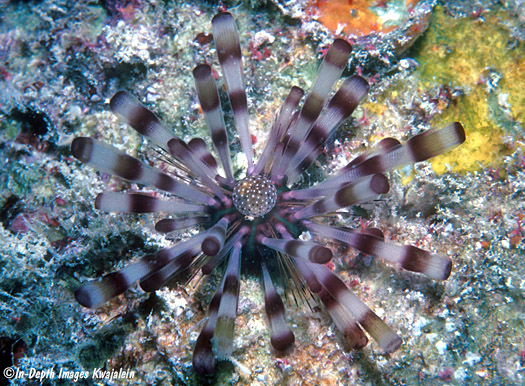
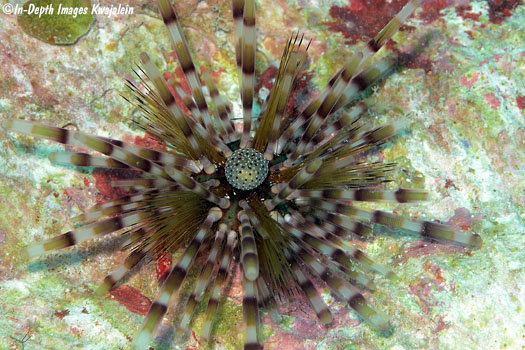
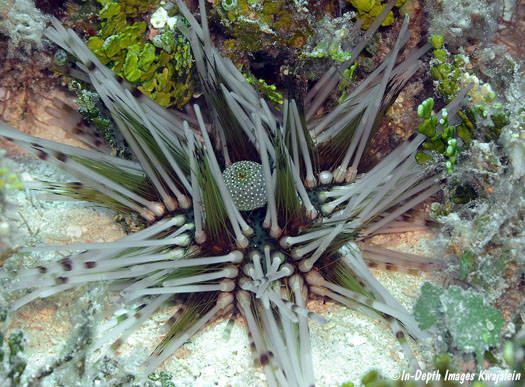
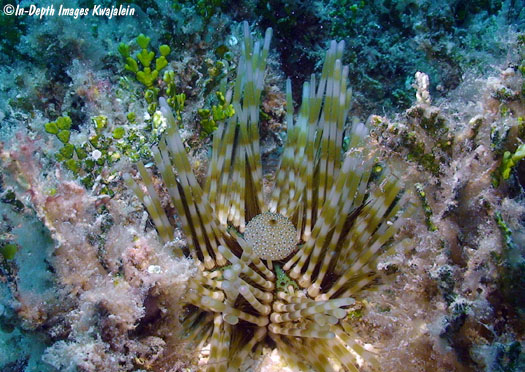
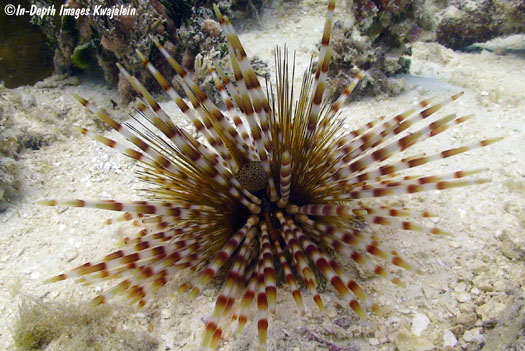



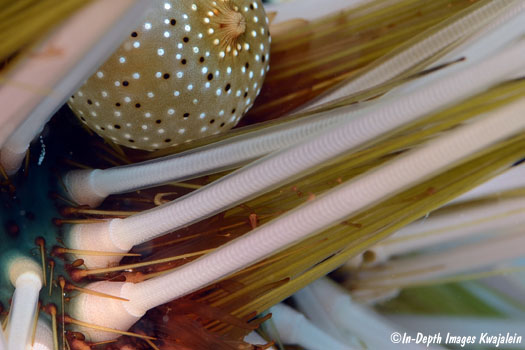
Close shots of the anal bulb.
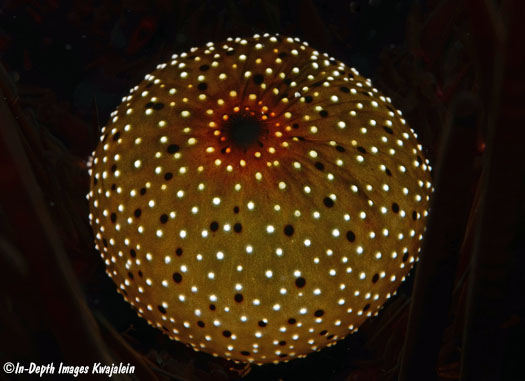
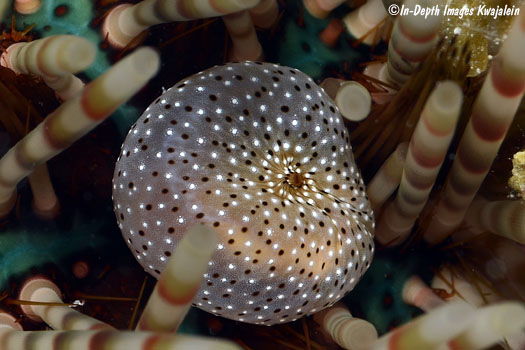
Occasionally, you see the anal bulb of this species punctured. A close look usually reveals the culprit, a commensal (or even parasitic) crab named Echinoecus pentagonus living inside the anus of the urchin. Usually all you can see is the triangular rostrum of the crab's carapace. In the photo below, a bit of the claws are also visible, manipulating the urchin's fecal balls, which the crab apparently mines for food.
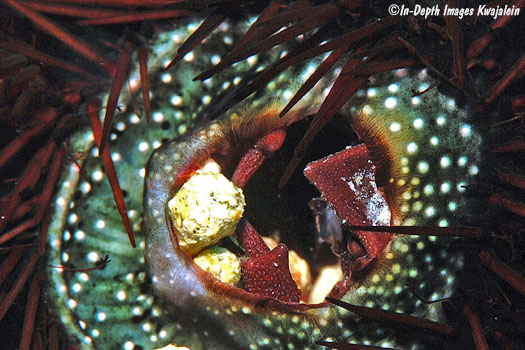
Small individuals.
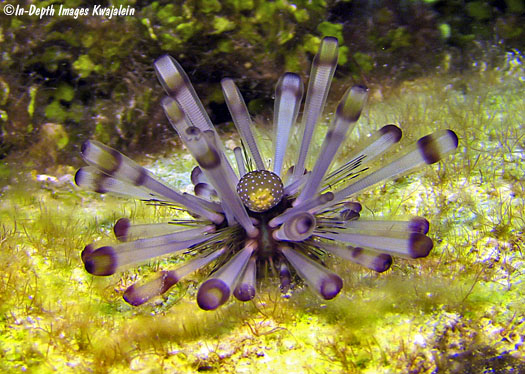
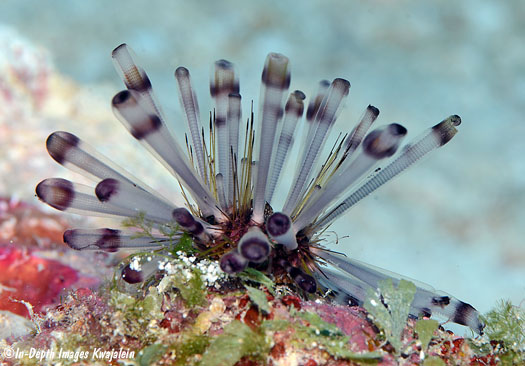
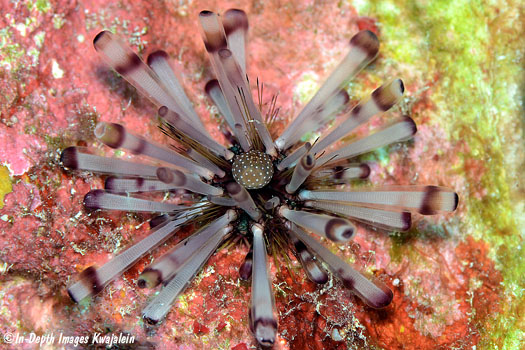
A close up shows the sculpturing on the thicker spines.
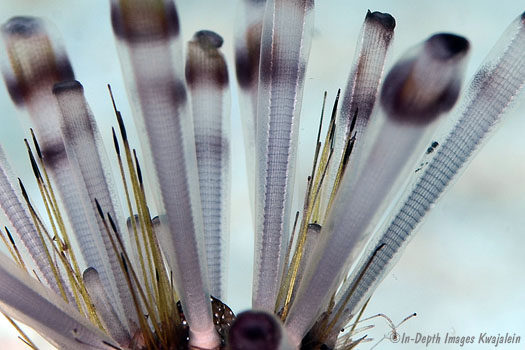
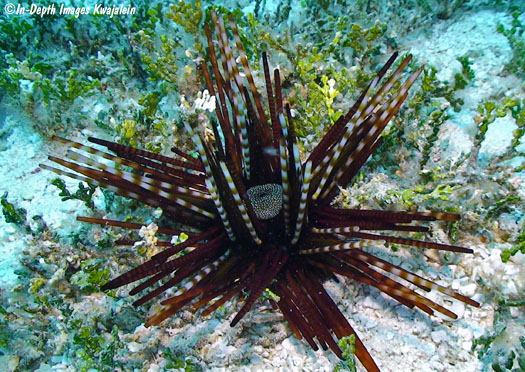
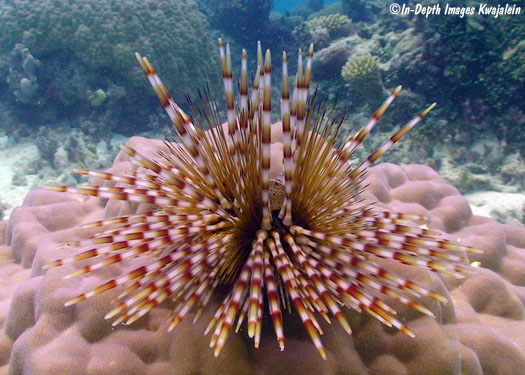
Large ones often aggregate in algae patches where there is no cover to hide. This may be for mutual protection. I have seen large triggerfish such as Balistoides viridescens blow on isolated urchins, causing them to roll over so they can attack the less protected bottom surface.
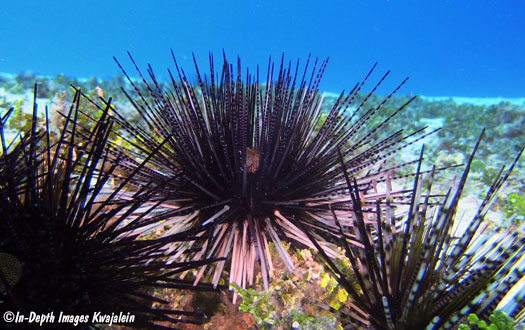
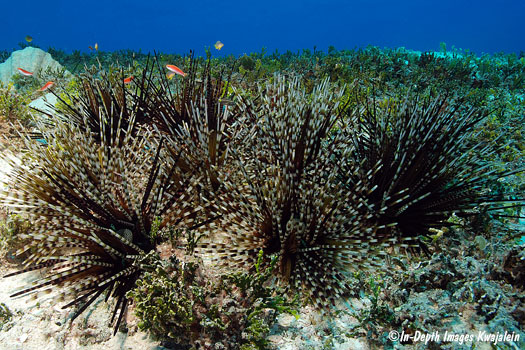

Using an old dead clam shell for protection.
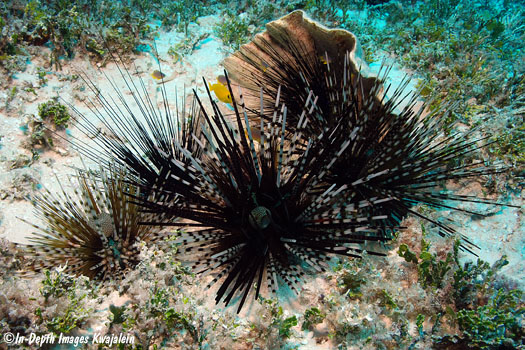
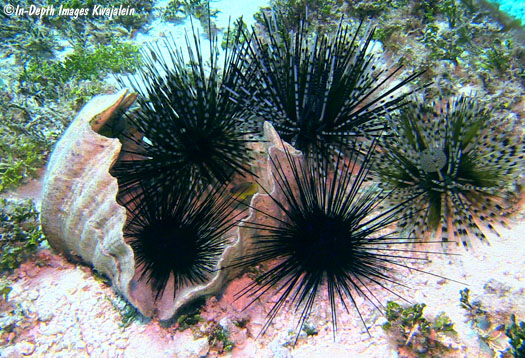
Fish cather around clusters of urchins, also for protection.

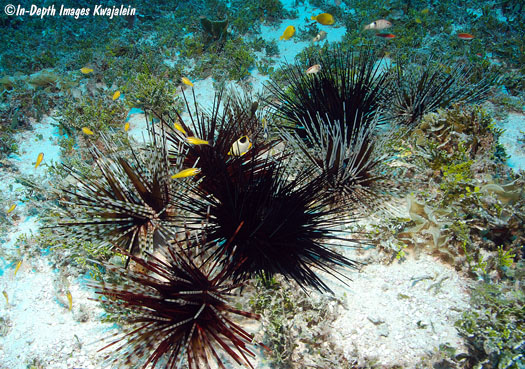

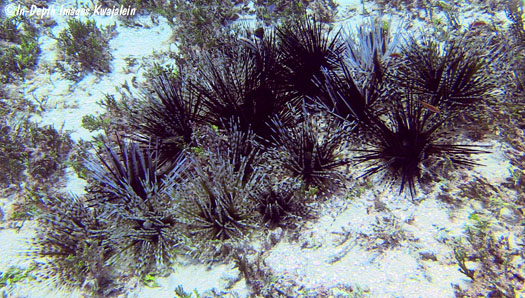
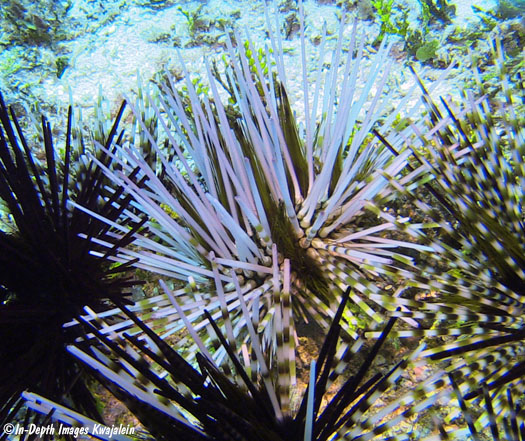
Created 15 June 2018